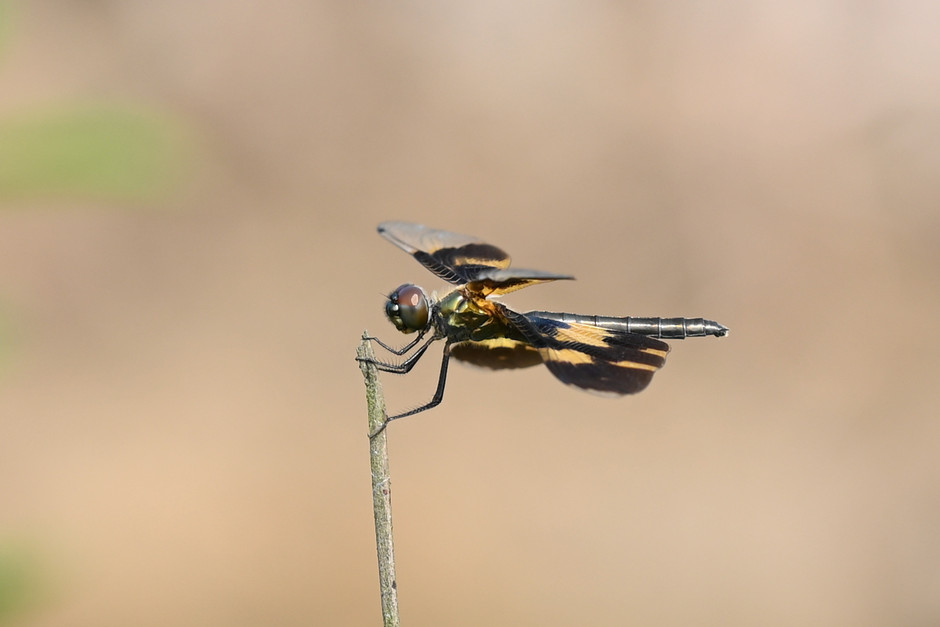Origin of the Collections
The collections have been built up over a long period. Among the oldest contributions are those from pioneers Carl Clerck (1709-1765) and Charles De Geer (1720-1778), both active in the circle around Carl von Linné.
The Swedish Museum of Natural History was founded in 1819 when Gustaf von Paykull (1757-1826) donated his collection to the state, a large part being his insect collection. The museum's first curator was entomologist Johan Wilhelm Dalman (1787-1828). Early on, the extensive collections of Carl Johan Schönherr (1772-1848) were also incorporated, including one of the world's most important collections of weevils (Curculionidae). The Royal Swedish Academy of Sciences (KVA) had been building up collections ever since its foundation in 1739, and these were integrated into the Museum of Natural History.
Through these, Paykull's and De Geer's collections, many of Linnaeus's disciples and other very old collectors are represented, at least with individual specimens, and also Adam Afzelius's entire exchange from Sierra Leone.
When the museum was divided into departments, Carl Henrik Boheman (1796-1868) led the entomological activities. He traveled around Sweden, collecting for many years to ensure that the collection would cover the entire country and be worthy of a national museum. During this time, the first major foreign collecting expeditions took place, such as the frigate Eugenie's circumnavigation in 1851-1853, and J.A. Wahlberg's stays in South Africa during the period 1837-1856.
Towards the end of the 19th century, scientific research expeditions were largely focused on polar exploration, and entomological exchanges were naturally limited. However, around the turn of the century and the first decades of the 1900s, a long series of tropical collecting trips took place, originating from the museum. These trips resulted in an extensive entomological exchange processed by world experts. This includes Yngve Sjöstedt's expeditions to Cameroon and Kilimanjaro (1890s and 1900s), Abraham Roman's expeditions in the Amazon, and Eric Mjöberg's expeditions in Southeast Asia and Australia (all in the 1910s and 20s), as well as René Malaise's journey to Burma in 1933-1935.
Current Growth of the Collections
The collections continue to grow annually. Amateur entomologists donate their private collections, often meticulously organized, labeled, and collected over the majority of a lifetime. The museum's own collecting efforts also contribute, often in connection with ongoing research projects, in recent years, for example, to biological hotspots such as Madagascar and New Caledonia. Nowadays, Malaise traps are widely used, invented by René Malaise in connection with his expedition to Burma. The Malaise trap has become the standard for insect inventories worldwide. A pioneering project to explore the Swedish diversity of flying insects is the Swedish Malaise Trap Project, operated by the Swedish Museum of Natural History from 2002-2006 and currently managed from Station Linné but still contributing to our collections as the material is identified. Other inventory and research projects continuously enrich our collections.
Type Specimens
The entomological collections contain many type specimens, the original specimens from which the species was scientifically described and which have a special status as references for the name. These are widely requested by researchers from around the world. The quantity depends on the fact that many prominent entomologists have been active at the museum or have donated their collections here, but also on the fact that experts worldwide have processed, for example, expedition material stored here. The inventory of types is still being conducted, but it may involve approximately 75,000 specimens of 35,000 different species. The largest subset is beetles, with about 30,000 type specimens, but there is also a significant number of type specimens among wasps, flies, true bugs, dragonflies, butterflies, caddisflies, termites, and spiders.


